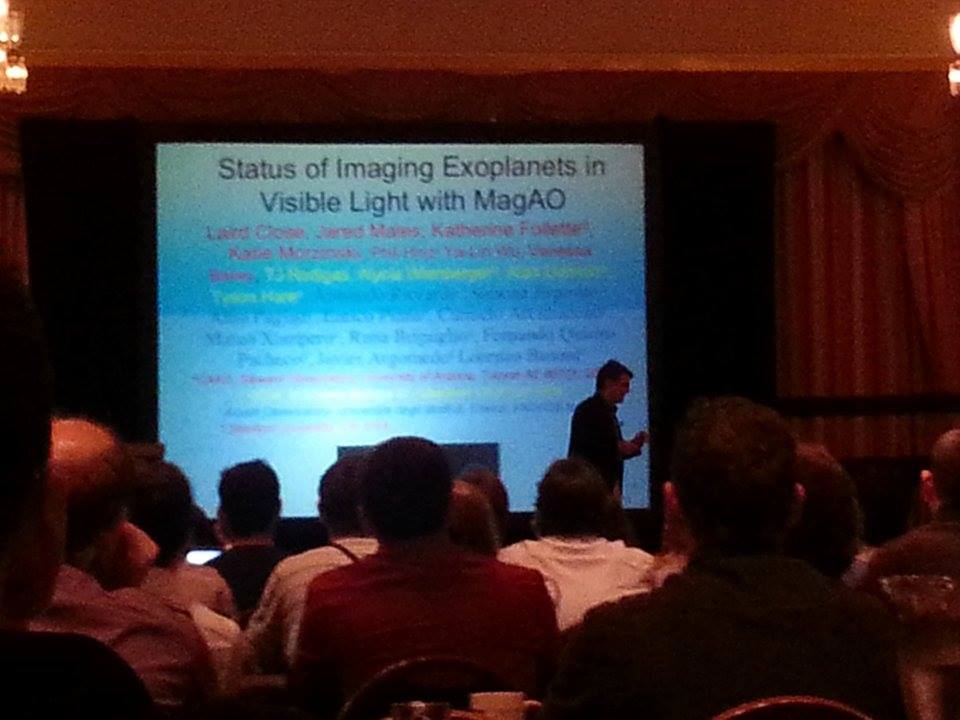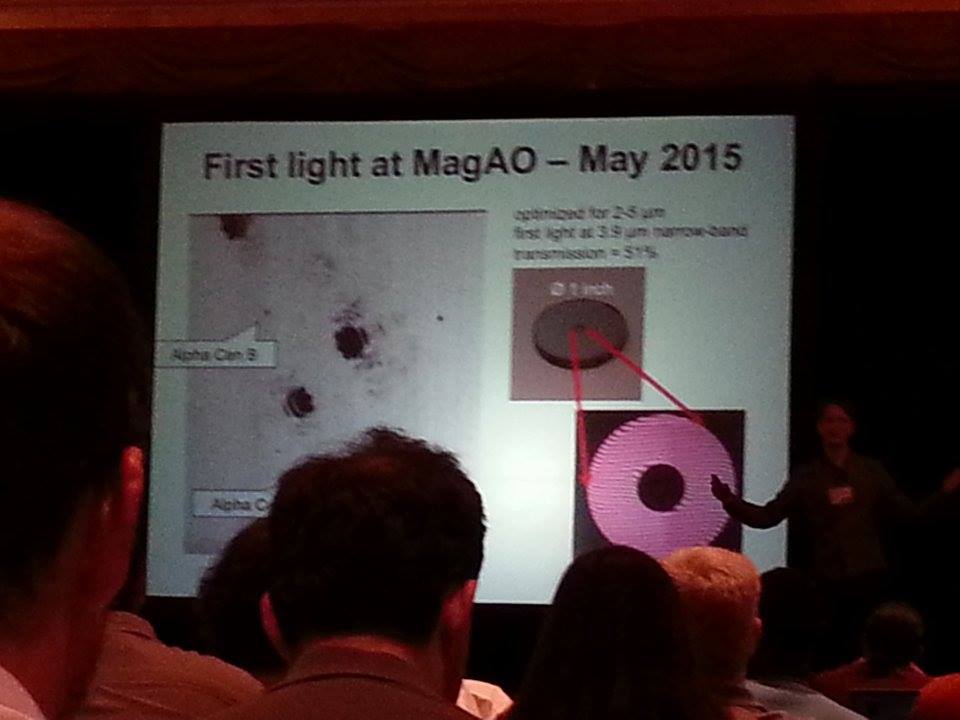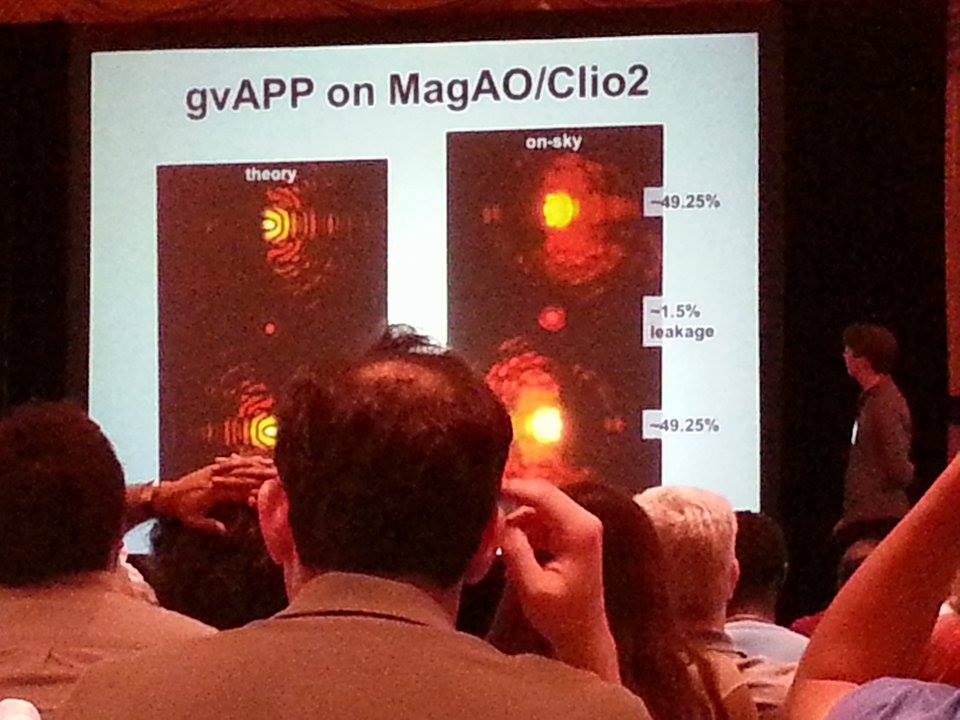As a number of MagAO team members are currently at the “In the Spirit of Bernard Lyot 2015” Conference in Montréal, Québec, we’ll have a couple blog posts this week discussing this exciting direct imaging-focused conference. Spirit of Lyot is a large meeting held every 3-5 years focused on the imaging of extrasolar planets and circumstellar disks. Along with all of the hot-off-the-press science results in the field, the meeting is particularly focused on the innovative new instrumentation, and technologies in development or currently on-sky to pave the way to new discoveries.
A great overview with some very cool MagAO updates were shared yesterday by Laird, the second talk of the conference:

Laird highlighted the many unique capabilities of MagAO and the strengths of going to visible wavelengths. As VisAO has demonstrated soundly, visible light observations offer many scientific advantages: you can detect strong emission lines like H-alpha, you have a better chance of distinguishing object characteristics with wider color-magnitude diagrams, can obtain a nice estimate of the extinction due to dust, and of course achieve much improved spatial resolution! With the adaptive secondary, which is more robust to lost actuators, MagAO’s performance on-sky in terms of RMS wavefront error is ~135 nm and right at the error budget from the lab estimates, providing ideal resolution to do this science with exceptional sensitivity.
Laird also made sure to talk about the many exciting recent results and ones coming soon, both disks and planet detection/characterization, with a run down of projects by Ya-Lin (new paper just hit arXiv! on the low-mass companion 1RXS J1609B), Jared, Katie, and Kate — more coming soon on these last two projects as the talks are being given later today!
Later in the afternoon, Gilles Otten, who was at MagAO with Matt Kenworthy back in early May (see their blogs from that run here), presented brand-new instrumentation results from testing their new vortex apodizing phase plate (VAPP) coronagraphs. In case you missed it, there are a ton of details in yesterday’s blog recapping the press release. But here are a few photos, too:
Gilles gave a great talk with very exciting observations showing the two complementary PSFs from this coronagraphic system and the excellent contrast on Clio. A few of the first targets were a few famous stellar binaries (Alpha Cen, Beta Cen):
And the performance on-sky was very close to the predicted performance!
You can also follow along with all of the updates using the hashtag #LYOT2015 on Twitter and Facebook! Click here to see the real-time Twitter results.


